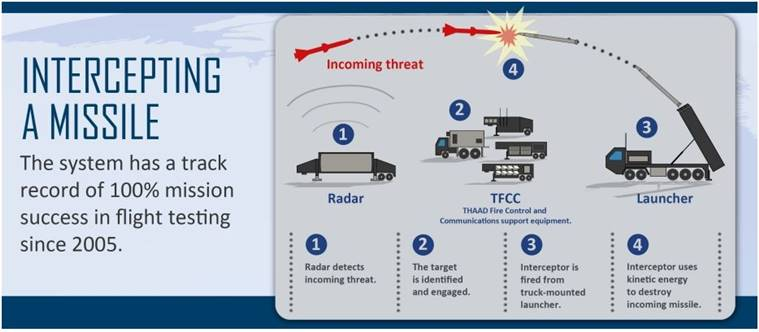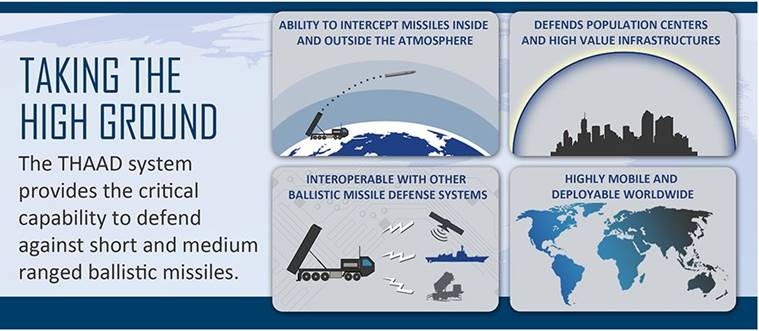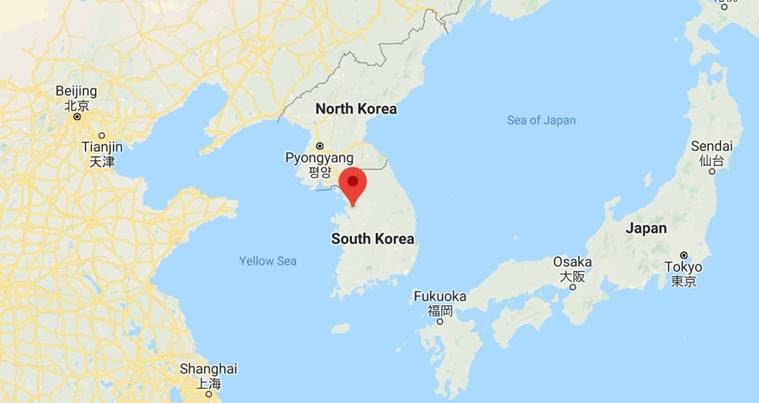International Relations
China’s Opposition to THAAD
- 01 Jun 2020
- 4 min read
Why in News
Recently, China has issued a statement reiterating its long-standing objections to the presence of the USA’s THAAD missile defence system in South Korea. This comes after the reports of an overnight operation to bring in new, replacement interceptor missiles to the USA base in South Korea.
Key Points
- THAAD:
- It is an acronym for Terminal High Altitude Area Defense, a transportable, ground-based anti-ballistic missile defence system.
- First proposed in 1987 and then finally deployed in 2008, the THAAD cannot be used as a form of attack against an enemy.
- It is designed to intercept and destroy short and medium-range ballistic missiles in their final flight phase.
- THAAD is coupled with space-based and ground-based surveillance stations, which transfer data about the incoming missile and inform the THAAD interceptor missile of the threat type classification.
- This system has been designed and manufactured by the USA company Lockheed Martin.
- It has been previously deployed in the United Arab Emirates (UAE), Guam, Israel, Romania as well.

- Background:
- THAAD was deployed in South Korea as a countermeasure against potential attacks by North Korea, particularly after the country had engaged in testing ballistic missiles.
- In 2017, when North Korea test-fired a few missiles in the direction of USA bases in Japan, the USA moved the missile systems to its army base in Osan, South Korea.
- Ever since China has objected these moves causing deterioration of their relationship.
- For South Korea, North Korea poses a nuclear threat and the THAAD missile defence system is a necessity to counter that.
- The USA and South Korea have consistently maintained that these missiles are only to counter potential threats by North Korea.
- THAAD was deployed in South Korea as a countermeasure against potential attacks by North Korea, particularly after the country had engaged in testing ballistic missiles.
- China’s Concerns:
- China is less concerned about the missiles itself and more about the system’s inbuilt advanced radar systems that can track China’s actions.
- The USA’s presence and influence in East Asia, through its military bases in Japan and South Korea, hamper the geopolitics and complex conflicts of the region.
- It also interferes with Beijing’s long-term military, diplomatic and economic interests in the region.
- Repercussions on South Korea:
- Economic: Operations of South Korean businesses, including large conglomerates like LG, Lotte and Samsung, were hampered. These included shutting down of institutions and enterprises that had little to do with the defence and military, like golf courses and shopping malls.
- Tourism: Tourism from China to South Korea fell drastically. The tourism industry contributes significantly to South Korea’s economy.
- Entertainment: South Korea’s entertainment industry witnessed concerts, shows and other commercial ventures in China being forced to cancel.
- Cosmetics and Personal Care: The sales of South Korean cosmetics and beauty products were being impacted. They are extremely popular in China but due to calls on social media to boycott South Korean products, their sales went down.
- Demographic: Protests sparked off in South Korea against the deployment which has caused major worries regarding peace and security in the region.
Way Forward
China can be a reassuring regional partner if it acknowledges that the cause of tension on Korean Peninsula is North Korea’s pursuit of offensive weapons, not the deployment of defensive systems on South Korea’s land.






